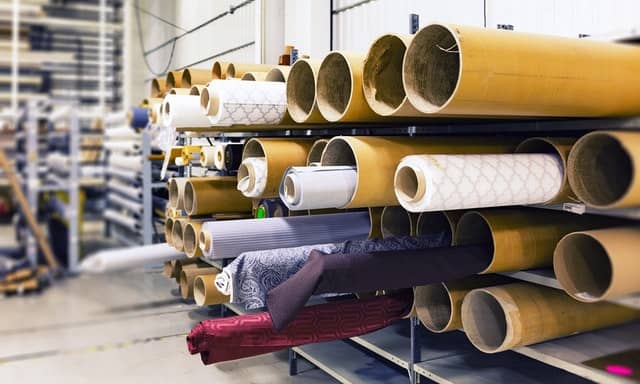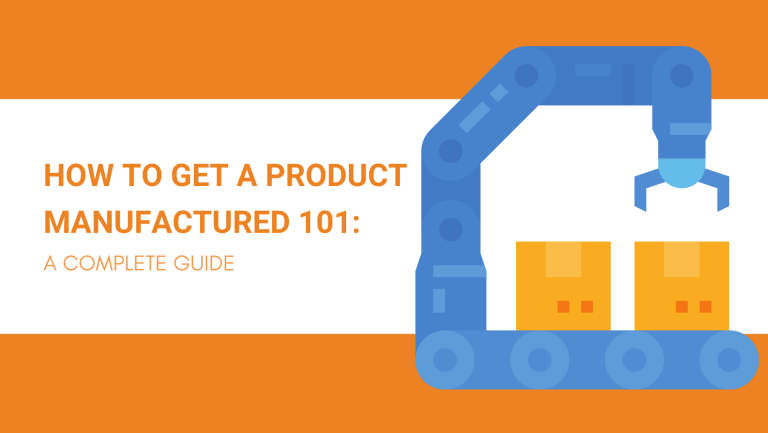It is a great achievement to come up with a new product idea. More so if it can solve a particular problem for consumers in your target market that other brands have not addressed.
However, if you are not a manufacturer, you might be wondering how to move forward with your idea. Is the concept truly viable? If so, how do you get it manufactured? Do you require any legal documentation or licenses?
So, in this detailed guide, we discuss each step on how to get a product manufactured and share tips on how to navigate the process.
Come along, will you?

Refine Your Idea or Product Concept
It is essential that you refine your product idea by addressing specific details about the product you would like to produce.
Take, for example, that you would like to manufacture sneakers with extra cushioning to provide superior foot comfort. Refining the product concept would entail addressing factors such as:
- The design- the design of the shoe should be both aesthetically pleasing and practical. You may need to come up with a sketch of it with definitive dimensions. Consider other factors like color combinations and decorative features too.
- The materials- the materials that you choose should complement the design and also improve functionality. In this case, they should (at the minimum) make the sneakers durable, appealing, and lightweight.
- Ingredients- any chemicals or substances that you would like to use in your products should be safe for human contact or animals, if you are developing an animal-related product.
- Functionality- any product concept should be functional as an idea and in reality. For example, if the shoe will be comfortable due to extra padding, the padding should not make the sneakers heavy, too tight, or prevent breathability.
- Industry regulations – are there industry guidelines that you are expected to adhere to? If there are, take note of them and ensure that your design or product formulation adheres to them. Otherwise, the product may not be approved for sale.

Note: The example of sneakers here is only meant to provide illustrative context. However, these factors are applicable to any product.
If you are uncertain about the concept or any of the factors we have discussed, then consider getting a prototype. It is, in essence, a sample of your product that would make it possible for you to test it and make any adjustments where necessary.
Research the Market

The goal of product development and manufacturing is to eventually sell the product to your target market and earn a profit. So, before you get to the manufacturing stage it would be wise to research the market and gauge:
- The competition- are there any other products that could rival the product you are looking to manufacture? If so, does your product provide any unique benefits that would give it an advantage over competing products?
- Demand- do the customers in your target market need the kind of product you are planning to offer? Can they afford it? What is the estimated size of your target market? The answers to these questions will tell you how well the product could sell.
- Profitability- consider the average price of similar products in the market or your estimated price versus the estimated cost of manufacturing each unit. This will show you whether the product is profitable or not.
- Patent infringement- the external design, structure, or functioning of your product idea should not be identical to any other patented product in the market.
You can conduct market research through online platforms or using data from regulatory authorities in your industry. Try and broaden your research to an international scale as well to avoid any surprises.
Finding a Manufacturer to Make Your Product
At this point, you will have defined your product concept and ascertained that it will be viable in the market. You would thus have the greenlight to find a suitable manufacturer that can bring your idea to life.

You can find a suitable manufacturer through:
Online Research
On the other hand, you could skip all the sleuthing and just find a manufacturer on your own through an online search. All you need is the right keyword and an online search engine like Google.
Remember to try and define your search. For instance, if you would like to find a manufacturer in China, your keyword could be: ‘custom shoe manufacturer China’. You could switch around the wording too just to get a more diverse bunch of results.
Once you get the search results, peruse each manufacturer’s website and see what they have to offer. Check out other customers’ reviews too if they are listed on any online platforms.
Speaking of platforms, you could also find lots of manufacturer recommendations on social media groups related to your industry, independent industry-based forums, or online marketplaces like Alibaba or 1688.
Sites like Quora and Reddit could equally be helpful although you would have to sort through lots of dialogue. The reviews there are also quite blunt but informative, nonetheless.
A Sourcing Company
A sourcing company comprises professional agents that have an in-depth understanding of the manufacturing sector in their country. They know or have the networks to connect you with manufacturers that can implement your product idea.
The advantage here is that you do not have to go through the ups and downs of finding a product manufacturing company. The sourcing company does all of that for you and only brings you a list of top options to choose from.
A top-shelf sourcing company could also:
- Seek a quote on your behalf
- Negotiate better rates and MOQ terms for you
- Oversee product development processes under your instruction
- Perform quality inspections
Sourcing companies charge a fee for their services and most firms allow you to choose the scope of services you would require. It is thus advisable to set aside a budget for their services based on what you would like to delegate.
Referrals

Any business arena is a competitive space. As a result, not many businesses or business owners would be willing to simply offer you a direct referral to good manufacturers.
You could, however, make inquiries through industry experts; they may be more willing to point you in the right direction.
Some research could easily also find you some good referrals. The first clue would be to check out the product labels on products that are similar or related to yours. You may find the manufacturer listed on them.
Alternatively, you could look up the formal registration documents of the product and see if the manufacturer is listed.
While these may sound like extreme measures, they may be necessary in situations where you want to manufacture an uncommon product. For example, it is easier to find metal or plastic spoon manufacturers than bamboo spoon manufacturers.
Choosing a Suitable Manufacturer

Take time to learn as much as you can about the potential manufacturers you get from your research or sourcing agents. You can then try and whittle down your list based on factors like:
Custom Manufacturing Services
Custom manufacturing services refer to the scope of services that a manufacturer offers towards making your product idea a reality.
They include:
- Design services- they should have an R&D team that can evaluate and advise you on how to perfect your custom product design for manufacturing if necessary.
- Prototyping/sampling- the factory should have the resources and skilled workforce to make 3D prototypes or molds for the development of samples.
- Production –the factory should have the right equipment to execute your custom design to a standard of your liking.
Aim for the manufacturer that can reliably offer you a top-standard range of services.
Output Capabilities

Compare how many units each manufacturer can make against your anticipated level of demand. If you would like 100, 000 units but they only make 10,000, you may need a manufacturer with a higher production capacity.
Additionally, consider whether they are flexible enough to supply more units as the demand for your product grows. If customers like your product, it would be a shame for it to quickly go out of stock while you wait for more supplies.
Ask each manufacturer about their lead times too and whether they would be able to expedite production for urgent orders.
Quality Standards
Even the best product concept can fail if it is executed in a shoddy way. So, it is imperative not to compromise on quality standards.
Check out products made by potential manufacturers to get a true picture of the quality of their work. You could also ask them about their quality control methods and whether they would be open to quality inspections from you or your sourcing agents.
Experience and Certification

Where possible, it is best to work with a product manufacturer that is well-experienced in handling the kind of product you would like to produce.
Granted, your concept may be unique but the manufacturer should have an understanding of fundamental things such as:
- Product materials or ingredients,
- Mold making
- Suitable production processes
- Assembly (where necessary)
- Quality testing
It is also crucial that you partner with a manufacturer that is licensed and certified to make that type of product. This may eventually determine whether your product gets authorization from regulatory bodies or not.
Intellectual Property Regulations
Insist on only working with manufacturers that have proper intellectual property regulations in place. This goes beyond them just promising not to share your design. They should also be willing to sign documents like non-disclosure agreements to that effect.
Manufacturing Costs and MOQ

Working directly with manufacturers usually gives you access to affordable factory-rate prices. That said, manufacturing custom product designs or formulations usually attracts higher rates compared to buying ready-made items.
Request for quotes from your shortlist of suppliers and compare. Try and pick one that offers the best balance between quality, cost, and value based on their scope of services.
On MOQ, remember the estimated demand levels you obtained from your market research? Aim for a manufacturer with a minimum order quantity within the same range.
Request Samples

The factors we have discussed above will undoubtedly whittle down your list to 2 or 3 manufacturers. If you are not sure about which one to pick, ask them for samples and go for the one that delivers the best results and a smooth co-working process.
Endeavor to keep an open mind as you navigate this step. It may take more than one attempt before you get a precise and good quality and precise sample. You or the manufacturers may also recommend changes after seeing the first complete sample.
On the downside, if you request samples from multiple companies, you may also have to pay multiple sampling costs. Sampling complex products, especially those requiring molds, can take some time.
Nevertheless, make sure that each manufacturer signs an NDA before you share your design or product concept with them. This way, they would be legally bound not to use or replicate your design whether you pick them or not.
Agree on Terms

Once you select a manufacturer to work with, you can go on to solidify the terms of your partnership. Standard practice would require that you sign a contract outlining details including but not limited to:
- Actual cost per item- whereas before you may have only discussed estimated costs, at this point, you can specify the exact amounts. More so, because you will have evaluated the sample and agreed on all design features.
- Supply terms- agree on the number of units you are likely to order, when they should be delivered, as well as the method of payments, and when the payments should be made.
- Shipping and delivery- if you will be working with an overseas manufacturer, they should disclose their shipping policy and the costs you are likely to incur. You can agree to them if they suit your needs but if not you could always arrange for alternative shipping.
Aside from the main contract, ensure that both you and the manufacturer sign a Nondisclosure Agreement (NDA) or a Nondisclosure, Non-circumvention, and Non-use (NNN) agreement if you are manufacturing in China.
It is recommendable that you seek the advice of professional counsel in evaluating such contracts so that you do not miss out on or misunderstand any important clauses that could work against you.
Manufacturing

With all your documentation in place, you can proceed to make your first manufacturing order.
Given that it is the first order, you can check in with your manufacturer from time to time just to ensure that there are no challenges or delays. If you have a sourcing agent, they can handle this task on your behalf as you work on issues like marketing the product.
When the order is complete, you can ask for quality reassurance via video, make a personal visit to the factory, or ask your sourcing agent to oversee quality inspection before packing. If everything is in order, you can approve the order for dispatch.
Tips on How to Get a Product Manufactured

Seek Out Professional Services
While they may cost more, professional manufacturers and design experts are worth every penny you invest in them. Their expertise could save you from making poor product development decisions or manufacturing a substandard product that you can not sell.
Be Strict About Quality
The quality of your product will eventually be what your brand is known for. You will need very little effort to sell your product if it is well made and delivers a pleasant user experience. Customers also gladly pay a premium price if the quality of the product is worth it.
Register Your Product Appropriately
There are standard procedure documents that your government may require you to fill and submit before introducing a new product into the market. Make an effort to submit each of them and seek clearance certificates or approvals.
Go a step further and ensure that you protect your intellectual property. Consult your legal counsel about patenting or copyrighting your product concept and or its functions.
This would limit the number of companies that will compete in the niche you carve out when you launch your product; they would not be able to just replicate your idea at will.
Keep an Open Mind and Weigh Different Options
Getting a product manufactured can have its twists and turns. It may take multiple tries to make the product functional and even then you may have to change it again to make it manufacturable. It is best to keep an open mind even as you prioritize your concept.
There is equally nothing wrong with weighing manufacturing options from different manufacturers locally and overseas. Widening your search radius to manufacturing hubs like China could give you access to a whole new range of benefits and solutions.
FAQs on How to Get Your Product Manufactured
How Much Does It Cost to Get a Product Manufactured?
There is no standard cost. The amount you end up paying will depend on the manufacturer, the materials you choose, the complexity of the design, and possibly the cost of making molds if they are needed.
You may, nevertheless, be able to cut back on costs if you find good quality but cost-effective materials. Most factories also offer very fair rates if you order in bulk or sign up as a long-term client.
Is It Better to Manufacture a Product Locally or Overseas?
Perhaps the better way to make this decision would be to weigh the pros and cons of working with local manufacturers versus overseas manufacturers.
Local manufacturers are those within your country or region.
Pros:
- They are easily accessible and you can make in-person factory visits whenever necessary.
- You can pay them in local currency and minimize your exposure to fluctuating forex rates.
- The shipping or delivery processes would likely be cheaper because the shipping distance between you and the manufacturer would be shorter.
Cons:
- Depending on your region, local manufacturers may have limited expertise. They may not be able to execute your design to its best potential.
- If your local manufacturers only operate on a small-scale basis, you will likely incur higher production costs than you would with a large-scale manufacturer.
- High taxation or inflation in your local economy would directly impact your manufacturing costs because both you and your manufacturer operate within the same financial system.
Overseas manufacturers, on the other hand, are those that operate beyond your local region or even your continent.
Pros:
- Seeking overseas manufacturing partners could give you access to advanced manufacturing options and new technologies that are not available in your system.
- Financial policies in some countries are way more conducive for manufacturing compared to others. Most brands turn to China, for example, because China factories enjoy fair taxation and government support and can thus offer very affordable rates.
- Countries that are manufacturing hubs have established access to a wide variety and consistent supply of raw materials. Working with their manufacturers assures you of a relatively stable supply chain.
- Manufacturers that are open to working with international clients are often up to date with international production standards. This could make your product more marketable in the global market.
Cons:
- It can be difficult to learn and understand foreign business regulations.
- Language barriers and time differences can hamper communication.
- Visiting overseas manufacturers can be costly and time-consuming.
In the final sum, either of these options could work for you. The goal is to simply go for whichever option can give you access to the best manufacturing capabilities.
In Conclusion
It is almost impossible to believe that you can get a product manufactured in just the 6 steps outlined in this guide. Does that mean that it is simple and easy? Of course not. It will take time and effort.
The main takeaway here is that the process is not impossible and neither does it require any complex or technical skills. You can begin the journey to getting your product manufactured whether you are a small business owner or a big brand looking to grow.
Better still, you can just as easily delegate the entire process to us at NicheSources. We are a full-service sourcing company that handles everything from finding the right manufacturer to product development, branding, global shipping, and lots more.
Wondering how to partner with us? We have made it quick and easy. Send us a brief description of the type of product you need to be made and request a free quote at any time.

